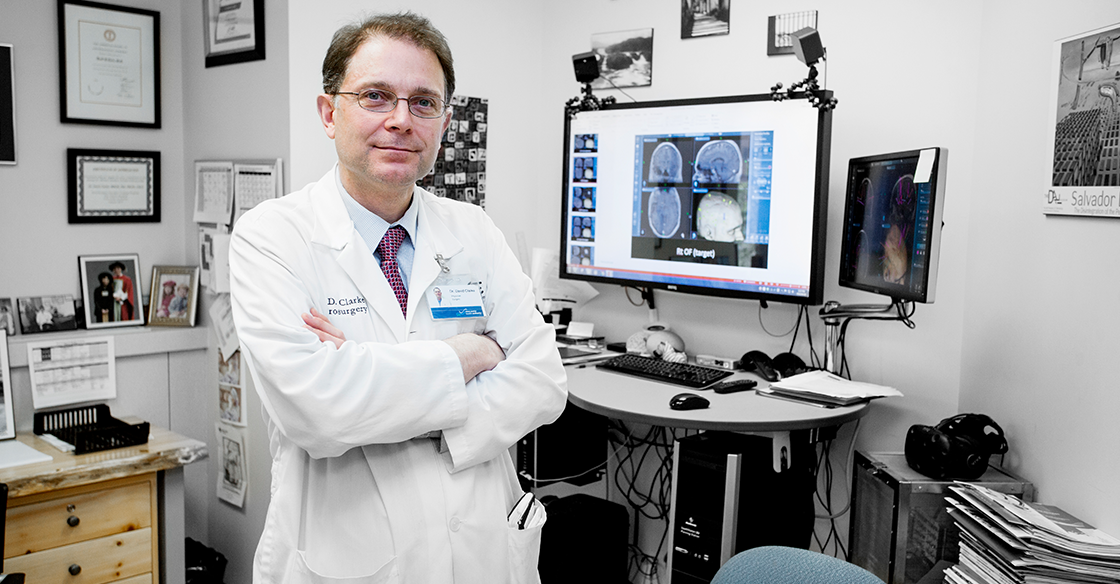
New software reducing wait times in neurosurgery
It doesn’t get harder than brain surgery — working amid the mushy tissues which define us as people — but the latest in computer programming has made this famously challenging occupation just a little bit easier.
When preparing for the OR, QEII neurosurgeon Dr. Lutz Weise would traditionally look over an MRI of his patient’s brain and make his plans with little more than these 2D images and his sharp memory. An entirely new phase of planning would begin in the operating room (OR), with careful measurements and a fresh look at the aforementioned MRI. Once anesthetized, his patients are wheeled to a separate part of the hospital for a CT scan to further guide his steady hand.
As of this year, however, new software, known collectively as the StealthStation, allows Dr. Weise and his colleagues to review MRIs in concert with several other imaging capabilities — such as CT and fibre tracking — all incorporated into a single, 3D representation of a patient’s brain. He can then review all this information ahead of time in great detail and save his intentions for the surgery directly onto the StealthStation for reference in the OR.
“One concern is OR capacity,” says Dr. Weise, “so if we can use that capacity more efficiently with shorter surgeries, wait times go down.”
The ability to plan his surgeries ahead of time so accurately has consistently taken two hours or more off his surgeries, which used to last 10-12 hours. This also helps him avoid vulnerable tissues and vessels in the brains he’s entering, reducing the likelihood of complications.
The addition of a novel tomography imaging device in the OR (referred to as the O-Arm) which the StealthStation can add to his 3D models in real time, has also made moving patients while anesthetized unnecessary.
“This technology enables us to do our surgery more effectively, efficiently and in a way which is ultimately safer for the patient,” says Dr. David Clarke, head of the division of neurosurgery at the QEII.
Funded by the QEII Foundation, the StealthStation is making a tremendous difference for patients with Parkinson’s disease, essential tremor and dystonia, among others, all of which can require surgical intervention, but according to Dr. Clarke, the largest difference has been seen with epilepsy patients. In some cases, the problematic portion of brain causing a patient’s seizures is difficult to identify, requiring the surgical implanting of electrodes and around-the-clock observation. Moving these people through the OR more quickly and safely has had a major positive impact on wait times, he says.
“There are so many Atlantic Canadian patients that we have yet to treat,” he says. “When it comes down to the patients, that’s where the big impact is — we’ll help more patients find answers and improve their quality of life by reducing or, in many cases, eliminating their seizures.”